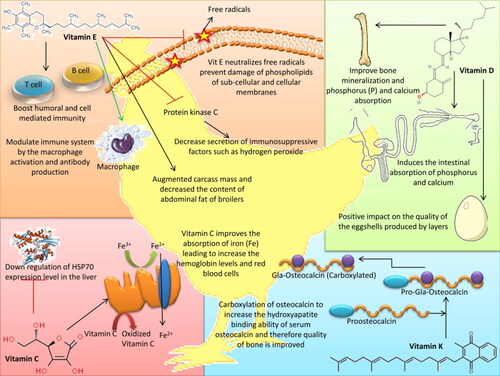The Flame Photometer (FP) is a specialized analytical instrument used for measuring the concentration of metal ions in animal feed, biological samples, and animal tissues. It is commonly used for detecting alkali and alkaline earth metals such as sodium (Na), potassium (K), calcium (Ca), and magnesium (Mg), which are essential for animal health and nutrition. Here’s a detailed and advanced procedure for using a Flame Photometer in the context of animal nutrition:
1. Preparation of Standard Solutions
• Select the appropriate standards: Use standard solutions of the target ions (Na, K, Ca, Mg, etc.) to calibrate the flame photometer. These standards should cover the expected range of concentrations in your samples.
• Prepare standard solutions: Dilute the stock solutions of the metals to make a series of standard solutions with known concentrations. For instance, you might prepare 0.1, 1, 5, and 10 ppm solutions of sodium and potassium.
• Use deionized water: Always use deionized or distilled water to prepare your standards and blanks to avoid contamination.
2. Calibration of the Flame Photometer
• Turn on the instrument: Switch on the flame photometer and allow it to warm up for about 10-15 minutes to stabilize the readings.
• Set the flame: Use an appropriate fuel gas mixture (usually air-acetylene or nitrous oxide-acetylene) to generate a consistent flame. Adjust the flow rates of both gases to maintain a steady and optimal flame.
• Set the wavelength: For each metal ion, set the photometer to the appropriate wavelength corresponding to the emission lines of that ion. For example, the emission wavelength for sodium is 589 nm, for potassium is 766.5 nm, for calcium is 422.7 nm, and for magnesium is 285.2 nm.
• Zero the instrument: Use a blank solution (usually deionized water) to zero the instrument, ensuring that no reading is taken for the blank.
• Run the standards: Introduce the prepared standard solutions one by one into the flame photometer and record the emission intensity. Create a calibration curve by plotting the intensity against the concentration of the standards.
3. Sample Preparation
• Feed samples: Animal feed samples should be finely ground to a homogeneous powder. If the sample contains high levels of organic matter, it may need to be ashed at high temperatures (450–550°C) to remove organic matter before the metal ions can be measured.
• Biological samples: For tissue, blood, or urine samples, prepare the samples by homogenizing them and possibly digesting with acids (such as nitric acid) to release the metal ions into a measurable form.
• Dilution: Depending on the expected concentrations of the analytes, you may need to dilute the samples to bring them within the calibration range of the instrument.
4. Sample Analysis
• Introduce the sample: Introduce the prepared sample solution into the flame photometer using a suitable sample holder (usually a flame atomizer or nebulizer). Ensure that the sample is nebulized effectively into the flame for accurate readings.
• Monitor the emission: As the sample is introduced into the flame, the metal ions will be excited by the flame’s heat and will emit light at specific wavelengths. The photometer will detect the emitted light and produce a corresponding reading.
• Record the results: The intensity of the emitted light is measured and compared to the calibration curve to determine the concentration of the specific metal ion in the sample.
5. Data Interpretation and Quality Control
• Compare with standards: Using the calibration curve, determine the concentration of each metal ion in the sample based on the measured emission intensity.
• Check for interferences: Flame photometers may suffer from spectral interferences or matrix effects (e.g., ion suppression). If there are suspected interferences, use flame photometer correction techniques (e.g., using a different wavelength or applying mathematical corrections).
• Quality control: Regularly run quality control (QC) samples and replicate analyses to ensure the reliability and reproducibility of the measurements. For consistency, recheck the calibration curve and use internal standards if necessary.
6. Reporting the Results
• Express the results: Report the concentration of metal ions (e.g., sodium, potassium, calcium, magnesium) in the sample, typically in ppm (parts per million) or mg/kg.
• Interpretation in animal nutrition: Use the data to assess the nutritional value of animal feeds or to evaluate the mineral content in animal tissues or body fluids. This can help ensure that the animal receives an adequate supply of essential minerals and helps in formulating balanced diets.
Applications of Flame Photometry in Animal Nutrition
• Evaluation of Feed Composition: Flame photometry is widely used to measure mineral content in animal feed, ensuring proper levels of sodium, potassium, calcium, and magnesium, which are essential for growth, health, and metabolic functions.
• Monitoring Mineral Levels in Animal Tissues: It helps assess the mineral composition of animal tissues, such as muscles, liver, and bones, providing information on the nutritional status and metabolic health of the animal.
• Formulation of Animal Diets: The data obtained from flame photometry can be used to balance the mineral composition in animal diets, which is crucial for preventing deficiencies or excesses of specific minerals.
• Study of Bioavailability of Minerals: By comparing the mineral levels in the animal’s diet and in its tissues, flame photometry can help researchers understand how well different minerals are absorbed and utilized by the animal’s body.
Precautions
• Use clean glassware: Ensure all sample containers and equipment are thoroughly cleaned to avoid contamination.
• Proper calibration: Regularly calibrate the instrument using fresh standards to maintain accuracy.
• Handling of samples: Avoid contamination during the sample preparation stage by using clean equipment and reagents.
• Safe use of chemicals: Handle all reagents and standards with care, especially concentrated acids, as they may be corrosive or hazardous.
By following this advanced procedure, flame photometry can provide precise and reliable data for assessing essential minerals in animal nutrition, contributing to the optimization of animal health and feed formulations.



